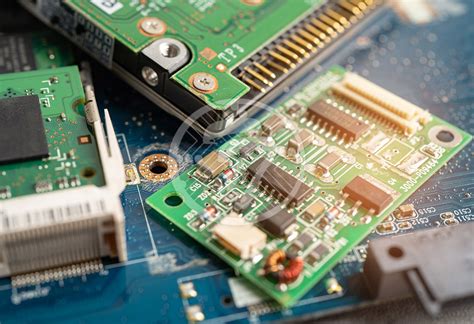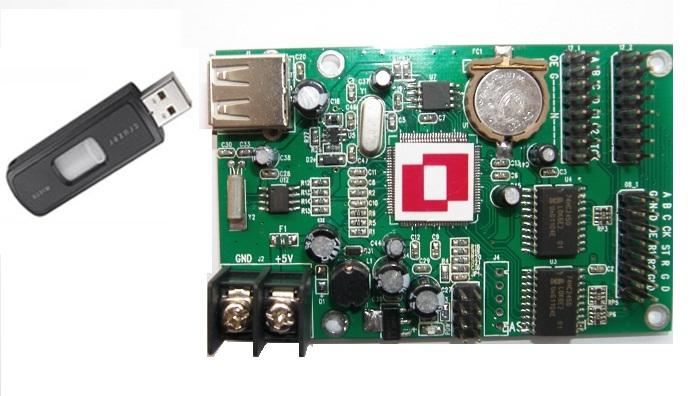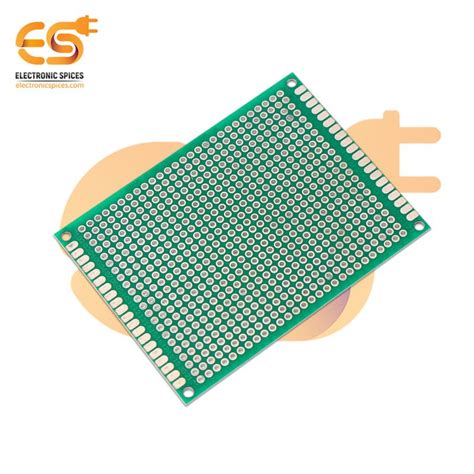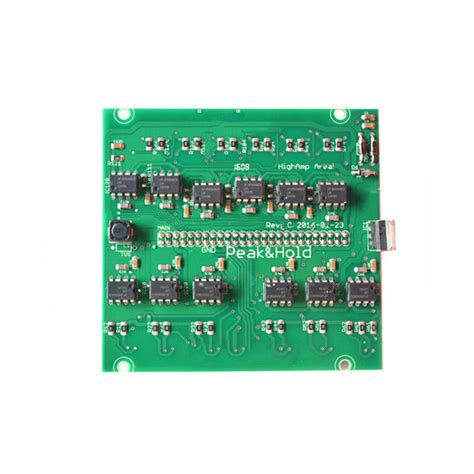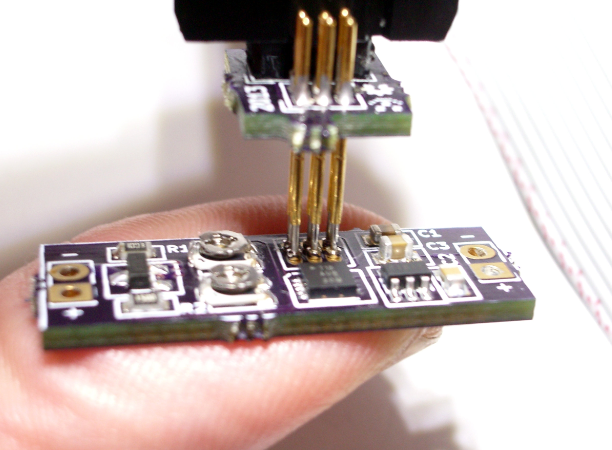Mastering BGA PCB Assembly: A Guide to Precision and Quality
Key Takeaways
When it comes to BGA PCB assembly, having a solid grasp of the underlying principles can significantly enhance your project outcomes. It is essential to understand that BGA technology has evolved, resulting in innovative methodologies that improve the reliability and performance of printed circuit boards (PCBs) in various applications. Achieving high-quality PCB assembly requires not only advanced tools and techniques but also adherence to proven practices. One key takeaway is that soldering techniques play a crucial role; mastering these can dramatically reduce defects and ensure a strong mechanical connection. Additionally, being aware of common challenges faced during the assembly process—such as thermal stress and alignment issues—can help you implement effective solutions before they escalate into significant problems.
Moreover, establishing stringent quality control measures is imperative for maintaining consistency and ensuring the performance of your BGA assemblies. Regular testing is critical in affirming reliability; employing various testing methods allows for early detection of potential issues in your PCBs, thus safeguarding integrity throughout their lifecycle. As you navigate through BGA PCB assembly, it becomes increasingly clear that staying informed about future trends will enable you to adapt quickly to industry changes and advancements. This proactive approach will not only streamline your pcba processes but also enhance overall results, positioning your projects for success in an evolving landscape.
Understanding these key takeaways ensures you’re well-equipped to handle the complexities involved in BGA PCB assembly, ultimately contributing to higher quality standards and more efficient production workflows.
Understanding BGA Technology: Basics and Innovations
Ball Grid Array (BGA) technology represents a significant advancement in the field of pcb assembly. This innovative approach enhances the performance of PCBAs by utilizing a grid of solder balls attached to the underside of electronic components. An essential highlight is that BGA technology facilitates a higher density of interconnections, allowing for more compact designs without compromising electrical reliability.
Recent innovations in BGA technology include the development of finer pitch components, which enable even more intricate designs. As soldering techniques advance, engineers must embrace precise reflow processes to prevent defects during assembly. One popular method is using hot air rework systems, which provide controlled heating for accurate soldering of BGA components.
| Advantages of BGA Technology | Challenges |
|---|---|
| Higher density interconnections | Increased difficulty in solder inspection |
| Reduced thermal and electrical resistance | Rework complexity |
| Improved performance reliability | Potential for solder joint fatigue |
“Embracing these advancements not only improves product quality but also enhances manufacturing efficiency.”
Essential tools for effective pcb assembly with BGA components often include stencil printers, vapour phase ovens, and optical inspection systems. These tools are crucial in ensuring that every step adheres to quality standards, ultimately leading to a reliable final product. Therefore, mastering the intricacies of BGA technology is vital for any engineer or technician involved in the realm of electronics manufacturing.
Essential Tools for BGA PCB Assembly: A Comprehensive List
When delving into BGA PCB assembly, having the right tools at your disposal is critical to ensure a successful and efficient process. The cornerstone of any effective pcb assembly operation is quality soldering equipment. Soldering stations that provide precise temperature control are essential for effective soldering of BGA components, as they help to prevent damage from excessive heat. Additionally, a reliable hot air rework station can be invaluable for both the placement and reflow processes in pcba.
Moreover, specialized tools such as a microscope or magnifying lamp are crucial for inspecting solder joints and ensuring all connections are intact. A good quality stencil and squeegee setup significantly enhance the application of solder paste, promoting even distribution across the PCB surface prior to component placement. For aligning and securing components before soldering, tools like tweezers and a precision pick-and-place tool can greatly improve accuracy.
Finally, investing in proper storage solutions for components—including an organized array of bins or drawers—can help streamline your workflow in any pcb assembly project. By utilizing these essential tools effectively, you will not only enhance the precision and quality of your assembly but also contribute to a more reliable end product overall.
Techniques for Effective Soldering in BGA Assembly
Effective soldering techniques are essential for achieving optimal results in BGA PCB assembly. One of the primary methods employed is reflow soldering, which utilizes heat to melt solder paste, creating a reliable connection between the BGA package and the printed circuit board (PCB). It is vital to ensure that the solder paste is applied evenly, as a controlled application can significantly impact both performance and yield. Precision in this step can prevent issues such as cold solder joints or voids, which may affect the longevity of the assembly.
Moreover, temperature management during the reflow process cannot be overlooked. Establishing an appropriate thermal profile is critical to not only melt the solder but also ensure that each component reaches its required temperature without damage. Using a thermocouple to monitor temperature at different points of the assembly can help fine-tune this process, leading to higher quality pcba products.
In addition to thermal management, employing quality flux materials enhances wettability and improves solder spread on metallic surfaces. Proper surface preparation of both the PCB and BGA devices is equally important; contaminants like dust or oils can lead to poor adhesion if not addressed prior to soldering.
Finally, using advanced techniques like robotic soldering or automated inspection aids in achieving greater consistency and quality control throughout the assembly process. This automation minimizes human error and enables high-volume production while maintaining precision in each assembled unit. Understanding these crucial techniques will not only facilitate effective soldering but establish a foundation for successful BGA assemblies, ensuring both reliability and performance in electronic applications.
Challenges and Solutions in BGA PCB Assembly Process
The BGA PCB assembly process presents several challenges that can impact the overall quality and reliability of the product. One significant challenge is achieving proper solder joint integrity. Since BGA components are mounted on the board with solder balls that are not visible during the actual reflow process, any misalignment or insufficient solder can lead to poor connections. To mitigate this risk, effective alignment systems and preciseness during placement are vital.
Another challenge lies in thermal management. The pcba process must ensure that sufficient heat is uniformly distributed across the board to achieve the correct reflow temperatures for all components, particularly for high-density assemblies. Utilizing thermal profiling can assist in monitoring temperature distribution and optimizing reflow parameters.
Moreover, inspecting BGA assemblies post-soldering can be complex due to the hidden solder joints. Employing advanced inspection techniques such as X-ray imaging plays a crucial role in ensuring joint quality and detecting manufacturing defects which might compromise reliability.
Additionally, managing variations in manufacturing environments, such as changes in humidity or temperature, can adversely affect soldering outcomes. Adopting environmental controls within the assembly area ensures consistency and minimizes risks.
In sum, addressing these challenges through a combination of careful planning, appropriate tools, and advanced inspection methods enhances both efficiency and quality in pcb assembly processes involving BGA components.
Quality Control Measures for BGA Assemblies
Ensuring high standards in BGA PCB assembly requires rigorous quality control measures throughout the assembly process. One of the primary approaches involves conducting thorough inspections at various stages to catch potential defects early. Implementing automated optical inspection (AOI) systems can significantly enhance the identification of issues such as misaligned or missing components, which are critical in maintaining the integrity of the pcba. Additionally, utilizing x-ray inspection methods allows for the verification of solder joint quality beneath the BGA package, where traditional visual inspections may fail to detect problems.
Another important aspect of quality control is adhering to established industry standards, such as IPC-A-610 for acceptability of electronic assemblies. Training staff on these standards helps ensure that everyone involved in the production process understands the expectations for quality, leading to a more consistent outcome. Regularly calibrating equipment and tools used in BGA assembly also helps mitigate risks related to mechanical tolerances and soldering accuracy.
Moreover, implementing a structured documentation process is essential for tracking modifications and findings throughout production. This documentation serves as a valuable reference when troubleshooting issues that may arise post-assembly. Continuous improvement practices based on feedback loops and performance metrics further enhance overall efficiency and reliability in achieving high-quality pcba outcomes.
By emphasizing these robust quality control measures, manufacturers can significantly reduce defects, ensuring that their BGA assemblies meet both operational requirements and customer expectations consistently.
Testing Methods to Ensure Reliability in BGA PCBs
In the world of BGA PCB assembly, achieving high reliability is paramount, given the intricate nature of BGA (Ball Grid Array) packages. To ensure that your pcba (printed circuit board assembly) meets quality standards, implementing rigorous testing methods is essential. One of the most common approaches is X-ray inspection, which allows for non-destructive examination of solder joints under the BGA, giving insights into potential defects such as voids or insufficient solder. Additionally, automated optical inspection (AOI) plays a crucial role in verifying component placement and solder joint quality before the final assembly phase.
Another effective method is thermal cycling, which tests the longevity and durability of PCB assemblies by subjecting them to extreme temperature variations. This process helps identify potential failures that might arise during regular use due to thermal stresses. Furthermore, incorporating electrical testing such as in-circuit tests (ICT) and functional tests can verify that each circuit operates as intended across all expected conditions.
By utilizing these testing methods, designers and manufacturers can enhance the reliability of their BGA PCBs, ensuring that each unit functions effectively within its intended application. Adopting a multifaceted approach to testing not only mitigates risks but also bolsters confidence in the integrity of your overall assembly process.
Future Trends in BGA PCB Assembly and Manufacturing
As technology advances, the landscape of BGA PCB assembly and manufacturing is evolving rapidly. One prominent trend is the increasing demand for miniaturization in electronic devices, which drives the need for more compact PCBA solutions. As components become smaller, BGA technology allows for higher density in soldering, facilitating more efficient designs without compromising performance. Additionally, automation is revolutionizing the assembly process; companies are integrating advanced robotic systems to improve speed and accuracy in soldering BGA components. This not only enhances productivity but also reduces human error.
Moreover, with the expansion of IoT (Internet of Things) devices, manufacturers are focusing on developing more sophisticated testing methods to ensure reliability in BGA PCBs. This shift emphasizes the importance of quality control measures that are not only rigorous but also adaptable to varying production scales. Furthermore, sustainability practices are emerging within the industry as companies seek environmentally friendly materials and processes to minimize their ecological impact during pcb assembly operations.
As these trends indicate a shift towards greater efficiency and reliability in manufacturing processes, they simultaneously highlight the importance of continuous learning and adaptation among professionals involved in BGA PCB assembly. Keeping abreast of these developments will be essential for maintaining competitive advantages in this dynamic field.
Best Practices for Managing BGA Assembly Projects
Effectively managing BGA PCB assembly projects requires a combination of strategic planning, skilled execution, and constant monitoring. One of the best practices involves establishing a clear project scope and timeline. It is vital to outline the objectives early on to ensure all team members are aligned. Furthermore, utilizing the right tools can significantly enhance workflow; platforms for managing project timelines and resources help in tracking progress and making adjustments as necessary.
Another key aspect is the importance of team collaboration. Regular communication among engineers, designers, and quality control personnel facilitates a smoother pcba process and addresses any concerns before they escalate. Integrating review phases after each milestone can promote quality by enabling teams to identify potential flaws in design or assembly before advancing.
Moreover, staying updated with the latest BGA technology innovations contributes to better outcomes in assembly projects. Regular training sessions for staff on new techniques can elevate skill levels across the board while enhancing overall efficiency in the pcb assembly process. Lastly, implementing rigorous testing methods throughout the project not only ensures reliability in the final product but also reinforces a culture of accountability and continuous improvement within the team.
By adhering to these practices, teams can masterfully navigate challenges while ensuring high standards of precision and quality in their BGA PCB assembly endeavors.
Conclusion
In summary, mastering BGA PCB assembly requires a blend of understanding BGA technology, honing precise techniques, utilizing the right tools, and implementing effective quality control measures. As we’ve explored throughout this guide, the intricacies involved in pcb assembly processes are numerous. Recognizing and addressing the inherent challenges in pcba can significantly increase overall efficiency and reliability in your projects. By adhering to best practices, adopting innovative solutions, and keeping an eye on future trends, practitioners can ensure that their BGA assemblies not only meet but exceed quality standards. Ultimately, a commitment to continuous improvement and an understanding of both current methodologies and emerging technologies will empower professionals in the field to advance their skills and achieve excellence in BGA PCB assembly.
FAQs
What is BGA PCB assembly?
BGA PCB assembly refers to the process of mounting Ball Grid Array (BGA) components onto printed circuit boards (PCBs). This technique allows for high-density connections and is crucial in modern electronics, given its effectiveness in managing heat and improving signal integrity.
What are the common challenges faced in BGA assembly?
In BGA PCB assembly, common challenges include issues related to thermal management, proper alignment of components, and potential solder bridging. Each of these challenges requires specific techniques and preventive measures to ensure a successful PCBA.
How can I ensure quality in my BGA assemblies?
To maintain quality in BGA assemblies, implement rigorous quality control measures, including visual inspections and automated testing. Consistent monitoring throughout the pcba process helps identify any defects early.
What tools are essential for effective BGA assembly?
Essential tools include solder paste applicators, reflow ovens, and X-ray inspection systems. These tools facilitate proper pcb assembly, ensuring optimal melting and adherence of solder to the BGA pads.
Are there specific testing methods for BGA PCBs?
Yes, several testing methods exist to assess the reliability of BGA PCBs, including Functional Testing, In-Circuit Testing (ICT), and X-ray inspection. These methods help verify that each connection is solid and functional.

